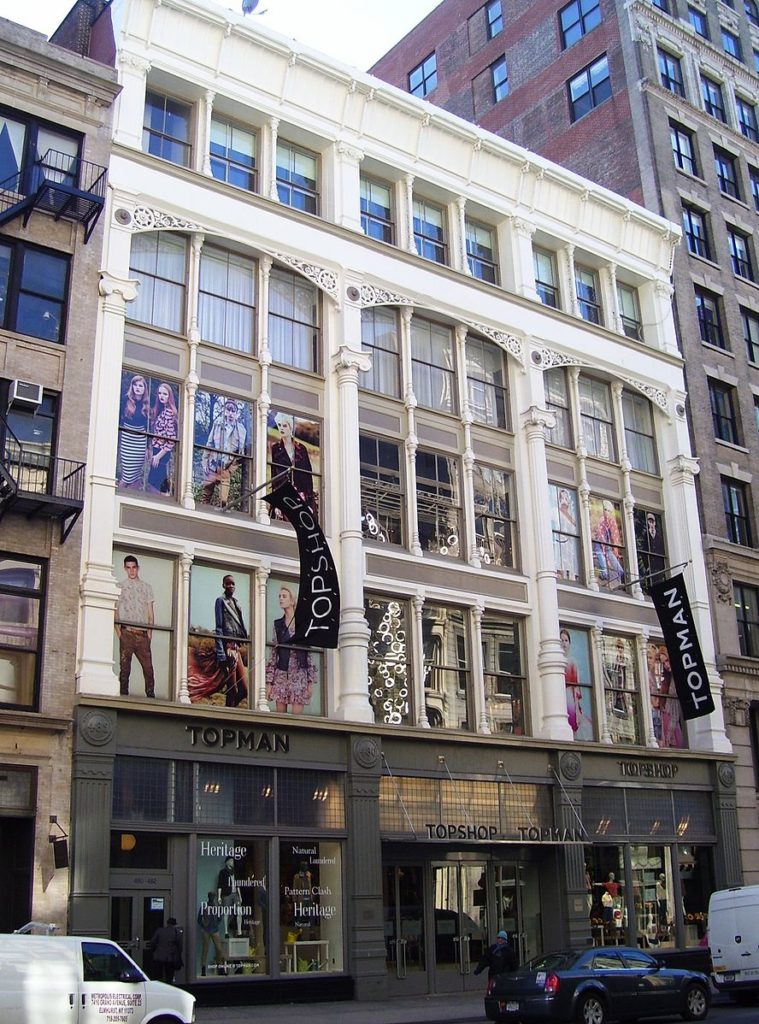If you’ve ever looked up while walking down SoHo Broadway, you’ve seen and likely admired the stately cast iron buildings that line this thoroughfare. The Haughwout Building at the corner of Broadway and Broome (home to Il Makiage at 490 Broadway) is a notable example and is significant in that it has not one but two ornate street-front facades. The Roosevelt Building at 478 Broadway and home to Top Shop has been called one of the most significant iron-front buildings in the world.
There are approximately 250 cast iron buildings in New York City, most of them in SoHo and mostly built from the mid-1800’s through the late 1800’s. An American invention, cast iron facades were not only less expensive to produce than stone or brick, but also much faster to fabricate, as they were made in molds rather than carved by hand and then affixed to the face of buildings. Ornate cast iron facades were originally used to spruce up existing buildings, but was later used in new construction as well. In addition, the same mold could be used for multiple buildings and a broken piece could easily be recast, making it a very efficient decorative method. The strength of the iron provided the structural support that allowed enlarged windows to be used that let floods of light into buildings as well as high ceilings creating vast open spaces with only columns necessary for support.

The Roosevelt Building at 478 Broadway
The structural metal frames used in the cast iron buildings of SoHo are considered by some to be precursors to the skyscraper and therefore hold much historic significance in the development of New York City. Cast iron architecture’s popularity as an architectural style short-lived, and by the 1880s cast iron began to be replaced by steel-skeleton construction with high speed elevators.
A large portion of SoHo was designated by the Landmarks Preservation Commission as the SoHo-Cast-Iron Historic District in August 1973. Friends of Cast Iron Architecture, a preservationist group founded by Margot Gayle in 1970, was a key player in the establishment of this Historic District that includes the entire SoHo Broadway corridor from Canal Street to Houston Street. By protecting this area, Gayle not only saved the unique buildings of SoHo, she also prevented SoHo from being targeted by large scale “urban renewal” projects and from Robert Moses’ Lower Manhattan Expressway project that was proposed to run the length of Broome Street, razing all buildings in its wake. Just imagine what SoHo Broadway would look like if we had no Haughwout Building, or no Roosevelt Building, or if we had just a highway and no buildings at all?
Read more from the Look Back at SoHo Broadway Series by Yukie Ohta